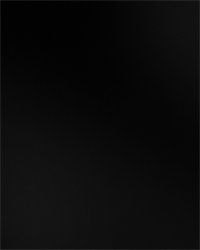Bobbi Woods
Workspace: Your work seems to revisit a dark elegance in cinema, the mood is reminiscent of a 1940s noir film. Could you discuss your relationship to cinema and its ephemera?
Bobbi Woods: My relationship to cinema exists tangentially. I have an affinity for movies, of course, but I rarely watch the ones from the posters I use. The format of the movie poster is appealing, as is its function to announce something that is going to come, but has yet to arrive. They retain a basic reference to, and are suggestive of, the immersive atmosphere of film, while having little if anything to do with the films they once promoted. The work uses the structure of the poster, and also its possibility to function seductively, but they become something else.
WS: In the video, California Light, sparse sounds and text seem to stand in for narrative, plot, and character. Can you talk about the process of editing or removing visual information?
BW: The video, California Light, is part of the Noir series I have been working on, which basically began as a pun, a kind of dry reduction of the genre into darkness (noir). I was inspired by the atmosphere of uneasiness, dread, and uncertainty produced by the stark contrasts of chiaroscuro and sharp angles within its cinematic composition. I liked the idea of creating a similar kind of space using only subtitles and sound (effects) surrounded by the (black) darkness of the screen in which, if there is a voice, it shifts without settling into a particular character. It could be male, or female, or neither, but just kind of moves in-between. The "I" and the "eye" are interchangeable. I also thought about Louise Lawler's A Movie without the Picture. As for process, I cull from film scripts, poems, artist writings, and combine those with my own writing, sometimes rewriting parts of what I appropriated. The process can feel like what I imagine sculpting may feel like, as there is a tactile molding and shaping of the text which occurs along the way. I think about it becoming kind of spatial as it relates to narrative, as it can draw you in or else remain flat due to dry reiterations. I will have ideas in mind of what I am going for and proceed to seek text out along those lines, and then add to it. While the visual image is removed, it is still present within my narrative. It will refer back to itself, aware of the dark space in which it is occurring.
WS: Can you talk about the poster piece you made for Dark Glasses, your Workspace show? The piece seemed to be a shift in your practice, from altering actual movie posters to photographing them.
BW: It was really exciting to work with you because the show evolved specifically for Workspace and as per your suggestion, different from what I had been doing. We decided on very few elements: one poster, one projected video, and the DVD Noir:Dark Glasses edition as a sculptural take-away. Using a video still of one of my other pieces, then zooming in and enlarging it to standard movie poster size was an interesting way to utilize the format in a self-referential way. We had titles like California Light and Dark Glasses, and so the black and white poster was in service to the chiaroscuro and the sort of hiding and revealing already in place. The composition reiterated some of the polygon shapes I used in several posters I made previously, and from which the design for my first show announcement at Fourteen30 Contemporary was derived. I wanted to cull from these elements and fold this form back into my work. The kind of degraded video texture apparent in the piece provided a close connection to the other seen or unseen video elements in the room, in a basic material and spatial way.
BW: It was really exciting to work with you because the show evolved specifically for Workspace and as per your suggestion, different from what I had been doing. We decided on very few elements: one poster, one projected video, and the DVD Noir:Dark Glasses edition as a sculptural take-away. Using a video still of one of my other pieces, then zooming in and enlarging it to standard movie poster size was an interesting way to utilize the format in a self-referential way. We had titles like California Light and Dark Glasses, and so the black and white poster was in service to the chiaroscuro and the sort of hiding and revealing already in place. The composition reiterated some of the polygon shapes I used in several posters I made previously, and from which the design for my first show announcement at Fourteen30 Contemporary was derived. I wanted to cull from these elements and fold this form back into my work. The kind of degraded video texture apparent in the piece provided a close connection to the other seen or unseen video elements in the room, in a basic material and spatial way.
More about Dark Glasses here.
[all Bobbi Woods. top to bottom: The Boys, 2010. Still from California Light, 2010. Fade Out, 2010. Courtesy of the artist and Annie Wharton Los Angeles]































